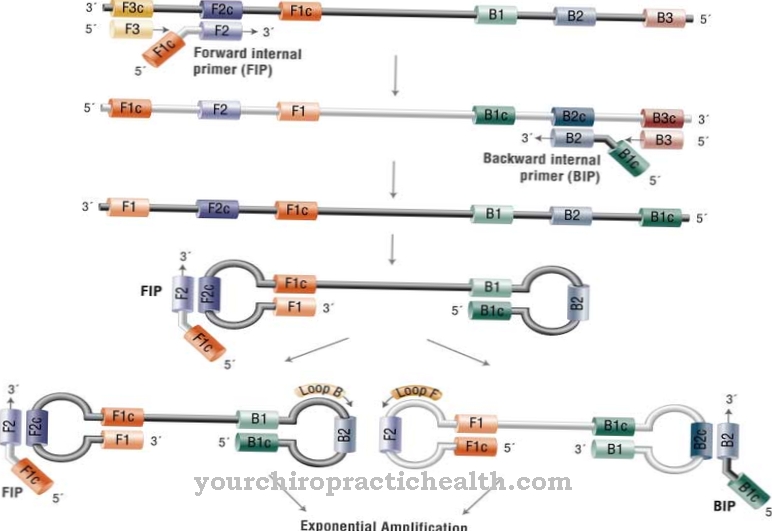The Group tour describes a certain position of the teeth of the upper and lower jaw to one another and thus belongs to a certain type of occlusion. Here, the lateral tooth contact between the upper and lower teeth plays a dominant role in the chewing movement.
What is the group tour?

Group leadership is a special type of dynamic occlusion. It characterizes the dynamic meeting of several teeth of the upper and lower jaw on the laterotrusion side. Here there is group contact of the upper and lower teeth on the working side, with the lower jaw moving laterally and thus creating an occlusion there. There is a balance contact on the opposite side.
An occlusion generally describes contact between the teeth of the upper and lower jaw when clenching. The teeth are exactly above one another and complete contact is made in this area.
There are several forms of contact. First, a distinction is made between static and dynamic occlusion. With static occlusion, tooth contacts take place without moving the lower jaw. A dynamic occlusion always means that the teeth come into contact between the upper and lower jaw while the lower jaw is moving.
Occlusion concepts are worked out and discussed on the basis of various occlusion options. These concepts are used to develop ideal ideas about how and when the teeth should come into contact with each other in order to achieve the best possible effect in terms of dentition development and general health.
During group guidance, the teeth of the upper and lower jaw meet, as already mentioned, on the laterotrusion side, with the lower jaw moving forward and inward on the one hand and backward and outward on the other.
Function & task
The group leadership that occurs in the context of occlusion is a special type of occlusion. The individual occlusion types and the associated occlusion concepts are not generally valid and are scientifically evaluated differently.
In connection with occlusion, the terms habitual, centric, forced dynamic, bilaterally balanced and unilaterally balanced occlusion are important. The habitual occlusion, for example, represents the habitual contact of teeth. The unilaterally balanced occlusion is important for group management. It means a one-sided group contact of teeth of the upper and lower jaw. This contact occurs on the working side, but on the balance side (mediotrusion side or non-working side) there is also a tooth contact, which is referred to as balance contact.
The occlusion concepts are based in turn on the investigation of how and which tooth contacts take place and which should be prevented so that the existing dentition can be preserved for as long as possible. The same applies to the durability of artificially created teeth. The concepts range from the anterior tooth-supported to the canine-supported, canine-premolar-supported, unilaterally guided, bilaterally guided, fully guided to sequentially guided occlusion.
The unilaterally guided occlusion represents the one-sided group guidance. With this conception, the teeth on the working side come together with disclusion of all other teeth. The general application of these concepts is currently still being discussed controversially. Today, individual solutions have to be found for each patient. In addition to the chewing habits, individual characteristics in the structure of the teeth also play a role.
The production of a functional tooth replacement in the dental laboratory requires a reproducible transfer of the occlusion in order to give the dental technician a three-dimensional picture of the individual movements in the teeth of the respective patient. The group tour is treated as an equivalent concept to the others. Which concept is used in each individual case depends on both individual characteristics and the priorities of the practitioner. Regardless of the equivalence of the concepts, however, the temporomandibular joint must be prevented from being exposed to unusual pressure loads after the prosthesis has been inserted.
You can find your medication here
➔ Toothache medicationIllnesses & ailments
Occlusal disorders can have implications for both dental health and general health. The causes for these deviations are manifold and can be found in missing teeth, jaw deformities, premature contact when clenching or in unmatched crowns or fillings.
Regardless of the types of occlusion, such as group guidance, centric occlusions or other forms of occlusion, no set of teeth has a perfectly ideal occlusion.
An occlusion disorder is also known as malocclusion or dysocclusion. Serious malocclusions can cause considerable pressure in the teeth. In the long term, pressure sores develop from this, which in turn promote infections in the mouth area.
Non-regular occlusions can cause diseases of the temporomandibular joint (craniomandibular dysfunction). Craniomandibular dysfunction is a disturbance of the neuromuscular balance. Localized rheumatic diseases develop, which can also affect the masticatory muscles, for example. By changing the existing occlusion, some good results were achieved in combating these disorders. However, it is assumed that occlusal disorders are only one of several factors that trigger craniomandibular dysfunction.
Periodontitis can be aggravated by an unfavorable occlusion. Furthermore, a connection between occlusion disorders and spinal column diseases and tension is suspected. It can be assumed that disorders of the occlusion can cause considerable health problems.
An inadequate occlusion after inserting the denture can also lead to accelerated breakdown of the jawbone due to incorrect pressure distribution in the teeth. In addition to limiting the bite force, this also provokes inflammation, which in the long term can also lead to systemic diseases in the entire organism.
























.jpg)



